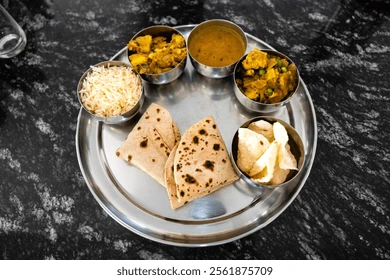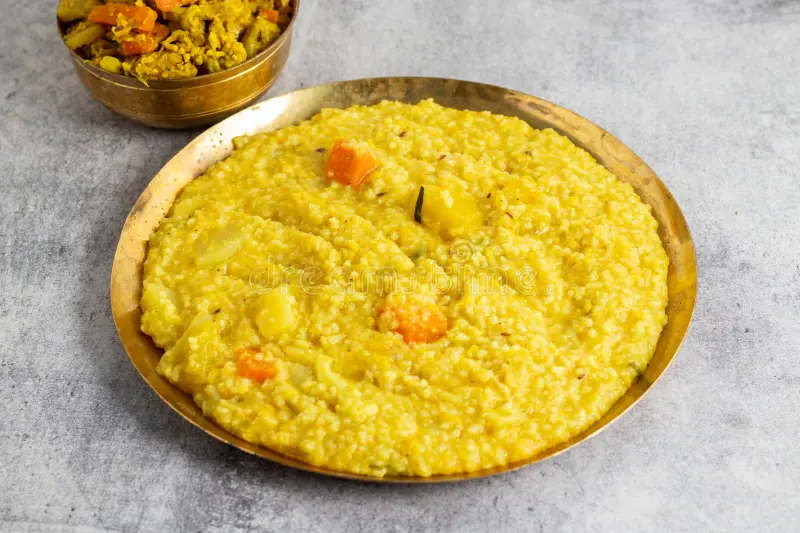What is the Speciality of Indian Food? Indian food is renowned worldwide for its rich flavors, vibrant colors, and aromatic spices. The speciality of Indian food lies in its diversity, with each region offering unique dishes that reflect its culture, history, and geography. From the creamy curries of the north to the spicy delicacies of the south, Indian cuisine is a celebration of taste and tradition. In this blog, we’ll explore what makes Indian food unique, the importance of spices, its cultural significance, and the most famous dishes, including the national food of India and South Indian favorites.
What is the Importance of Spices in Indian Food?
Spices are the heart and soul of Indian cuisine. They not only enhance the flavor but also have medicinal properties. The importance of spices in Indian food cannot be overstated, as they define the taste, aroma, and even the color of the dishes.
The Role of Spices in Indian Cooking
Indian spices like turmeric, cumin, coriander, and cardamom are used in various forms—whole, ground, or as pastes. Turmeric, for instance, adds a golden hue and has anti-inflammatory properties. Cumin and coriander are often used together to create a warm, earthy flavor.
Health Benefits of Indian Spices
Many Indian spices are known for their health benefits. For example, ginger aids digestion, while cinnamon helps regulate blood sugar levels. The use of spices in Indian food is not just about taste but also about promoting overall well-being.
Key Spices in Indian Cuisine:
- Turmeric
- Cumin
- Coriander
- Cardamom
- Cloves
- Cinnamon
What Is The Speciality of Indian Food | Famous Indian Dishes?
What is the Importance of Food in Indian Culture?
Food plays a central role in Indian culture, symbolizing hospitality, tradition, and community. The importance of food in Indian culture is evident in festivals, weddings, and daily rituals.
Food as a Symbol of Unity
In India, sharing a meal is a way to bring people together. Whether it’s a family dinner or a community feast, food fosters a sense of unity and belonging.
Festivals and Food
Indian festivals are incomplete without traditional dishes. For example, during Diwali, sweets like ladoos and barfis are prepared, while during Pongal, a rice-based dish called Pongal is celebrated.
Popular Festival Foods:
- Diwali: Sweets like ladoos and barfis
- Pongal: Rice-based Pongal dish
- Holi: Gujiya and thandai
What is the Favorite Food in India?
India’s diverse culinary landscape means that favorite foods vary by region. However, some dishes are universally loved across the country.
North Indian Favorites
In North India, dishes like butter chicken, biryani, and paneer tikka are immensely popular. These dishes are rich, creamy, and often paired with naan or roti.

South Indian Favorites
South Indian cuisine is known for its use of rice, lentils, and coconut. Dishes like dosa, idli, and sambar are staples in this region.
Top Favorite Foods in India:
- Butter Chicken
- Biryani
- Dosa
- Idli
- Paneer Tikka
What is the National Food of India?
While India doesn’t have an official national food, khichdi is often considered a de facto national dish. This simple yet nutritious dish is made from rice and lentils and is enjoyed across the country.

Why Khichdi?
Khichdi is easy to prepare, highly nutritious, and can be customized with vegetables and spices. It’s also a comfort food for many Indians.
Variations of Khichdi:
- Vegetable Khichdi
- Moong Dal Khichdi
- Bajra Khichdi
What is the Most Famous Food of India?
Indian cuisine boasts several iconic dishes that have gained international fame. The most famous food of India includes biryani, butter chicken, and masala dosa.
Biryani: A Royal Delight
Biryani is a fragrant rice dish made with spices, meat, and vegetables. Each region in India has its own version, such as Hyderabadi biryani and Lucknowi biryani.
Butter Chicken: A Creamy Classic
Butter chicken, or murgh makhani, is a rich and creamy curry made with tomato, butter, and cream. It’s a favorite in Indian restaurants worldwide.
Famous Indian Dishes:
- Biryani
- Butter Chicken
- Masala Dosa
- Chole Bhature
- Rogan Josh
What is the Famous Food of South India?
South Indian cuisine is distinct from North Indian food, with a focus on rice, lentils, and coconut. The famous food of South India includes dosa, idli, and vada.
Dosa: A Crispy Delight
Dosa is a thin, crispy pancake made from fermented rice and lentil batter. It’s often served with sambar and coconut chutney.
Idli: A Healthy Staple
Idli is a steamed rice cake that’s soft, fluffy, and easy to digest. It’s a popular breakfast item in South India.
Popular South Indian Dishes:
- Dosa
- Idli
- Vada
- Uttapam
- Pongal
The Diversity of Indian Food
Indian food is incredibly diverse, with each region offering unique flavors and cooking techniques. From the spicy curries of the south to the rich gravies of the north, Indian cuisine is a reflection of its cultural and geographical diversity.
Regional Variations
- North India: Known for rich, creamy dishes like butter chicken and dal makhani.
- South India: Famous for rice-based dishes like dosa and idli.
- East India: Known for sweets like rasgulla and savory dishes like fish curry.
- West India: Famous for snacks like vada pav and dishes like dhokla.
Conclusion
The speciality of Indian food lies in its diversity, rich flavors, and cultural significance. From the importance of spices to the role of food in Indian culture, every aspect of Indian cuisine tells a story. Whether it’s the national food of India, khichdi, or the famous food of South India, dosa, Indian food is a celebration of tradition and taste. Explore more about Indian cuisine on What is the Specialty Of and discover the magic of Indian flavors.
FAQs About the Speciality of Indian Food
1. What makes Indian food unique compared to other cuisines?
Indian food is known for its rich diversity, vibrant flavors, and extensive use of spices. Each region in India has its own distinct culinary traditions, making it one of the most varied cuisines in the world.
2. Why are spices so important in Indian cuisine?
Spices are the heart of Indian cooking, used not only for flavor but also for their medicinal properties. Common spices like turmeric, cumin, coriander, and cardamom add depth, aroma, and health benefits to dishes.
3. What is the significance of vegetarian food in Indian cuisine?
India has a strong tradition of vegetarianism, influenced by cultural, religious, and ethical practices. Dishes like dal (lentils), paneer (cottage cheese), and a variety of vegetable curries are staples in Indian vegetarian cuisine.
4. How does regional diversity influence Indian food?
India’s vast geography and cultural diversity result in a wide range of regional cuisines. For example, South Indian food is known for its use of rice, coconut, and tamarind, while North Indian cuisine features wheat-based breads like naan and rich, creamy gravies.
5. What are some iconic dishes that represent Indian food?
Iconic Indian dishes include butter chicken, biryani, samosas, dosa, chaat, and gulab jamun. Each dish reflects the unique flavors and cooking techniques of its region.
6. Why is Indian food considered healthy?
Indian food often incorporates fresh ingredients, legumes, vegetables, and whole grains. Spices like turmeric, ginger, and garlic have anti-inflammatory and antioxidant properties, contributing to overall health.
7. What role does street food play in Indian cuisine?
Street food is an integral part of Indian culinary culture, offering quick, flavorful, and affordable options. Popular street foods include pani puri, vada pav, and kebabs, showcasing the bold and tangy flavors of India.
8. How does Indian food balance sweet, spicy, sour, and savory flavors?
Indian cuisine is known for its perfect balance of flavors. Dishes often combine sweetness (from jaggery or fruits), spiciness (from chilies), sourness (from tamarind or yogurt), and savoriness (from spices and herbs) to create a harmonious taste.
9. What is the importance of bread in Indian cuisine?
Bread, such as naan, roti, and paratha, is a staple in Indian meals, especially in the north. It is often used to scoop up curries and gravies, making it an essential part of the dining experience.
10. How has Indian food influenced global cuisine?
Indian food has had a significant impact on global cuisine, with dishes like curry, tandoori chicken, and chai tea becoming popular worldwide. The use of Indian spices and cooking techniques has also inspired fusion cuisines in many countries.
